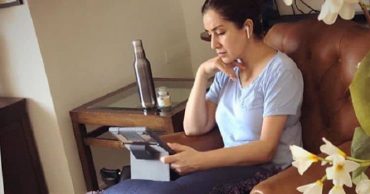Errol Morris, the king of documentaries, has been slated to direct a new project with Netflix called Wormwood. This Oscar-winning director has been giving us impressive works in various forms, and his new series will reflect just that style. Part documentary and part narrative drama, Wormwood will be tackling drugs, the CIA, and New York City with a dive into the death of CIA employee Frank Olson. In 1953, Olson supposedly jumped out of his New York City hotel window to his death after being dose with LSD unknowingly. We are as excited about this premise as we are with getting another piece of art from Errol Morris.
Here are five things you should know about the famed director to get you prepped and ready for Wormwood.
1. Before he became famous, he worked a stint of jobs after he got his B.A. in History in 1969.
He graduated from University of Wisconsin-Madison. Morris first worked as a salesman for a cable television company. He then worked as a term paper writer for a while before deciding to head back to school.
2. He got into graduate school in the most unorthodox way.
He did not turn in any applications or essays and waited for a reply. Instead, he went right to the school’s doorsteps to try and talk his way into admission. He tried this process at the University of Oxford and Harvard University with no luck. However, he did get into Princeton University using the very process. It’s either luck, or he was just really good with his words. It’s more than likely the latter, but we can’t say. He was successful at Princeton and moved to Berkeley to pursue his Ph.D.
3. Being that his mother was a Julliard-graduate music teacher, Morris is also a musician.
He spent an entire summer in France when he was about 15 or 16 years old to study cello under acclaimed musician Nadia Boulanger. He’s also loved films and books since he was a child, oftentimes spending his weekends watching horror films.
4. He doesn’t have normal stereoscopic vision like most people.
When he was just a kid, Morris was diagnosed with strabismus, a condition where each eye points at a different direction. There’s a way to treat this condition and Morris was getting treatment. However, he refused to wear an eye patch as a kid. This is the reason why one of his eyes has limited sight.
5. For the documentary, The Thin Blue Line, Morris spent at least 2.5 years just trying to track down the different players involved in Randall Adams’ case.
He personally talked to each one in order to get them to take part in the film. He did the same for Randall Adams and urged him into talking in order to tell his story. The film itself uncovered evidence that led to a hearing, which overtuned Randall Adams’ verdict of capital murder. He walked from prison in March 1989, and not too long after, Adams proceeded to file a lawsuit against Morris over the rights to his life.
 Follow Us
Follow Us




